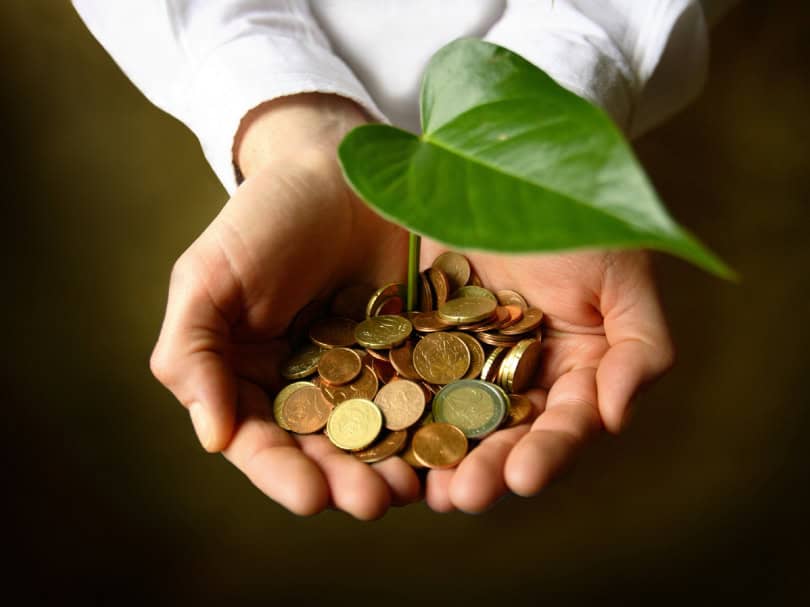The South Asian region is one of the most vulnerable areas affected by climate change due to its geography coupled with high levels of poverty and population density. The most vulnerable areas are food insecurity, agriculture, fisheries, vector-borne diseases, coastal areas and many other environmental issues.
Various studies confirmed that in the recent past the South Asia region suffered from climate change; between 1990 and 2008, the region has 1.749 billion population or about one-fourth of the world’s population, making it both the most populous and the most densely populated geographical region in the world.
Half of the region’s population is affected by at least one weather-related disaster, leaving almost 60,000 dead and resulting in about $45 billion in damages.
From mass suicide of farmers in India to devastating flooding in Pakistan and Bangladesh, climate change is turning into a cruel destruction agent in South Asia.
Climate change has contributed to the suicides of nearly 60,000 Indian farmers and farm workers over the past three decades, according to research that examines the toll rising temperatures are already taking on vulnerable societies.

Island nation Maldives is facing a rise in sea levels and the bleaching of its coral reefs – perils that made it a poster child for the consequences of climate change.
It is expected to submerge under rising sea levels in another few decades, leaving not even a hint of those beautiful islands that have attracted tourists over the years.
The track record of South Asian countries on achieving Millennium Development Goals in the past is far from satisfactory as is evident from respective Country Reports submitted at the end of 15 year time period in 2015.
Now, into two years after committing to Sustainable Development Goals, (SDGs) looking at voluntary National Reviews (VNR) submitted by few South Asian members to the High-Level Political Forum (HLPF), under the auspices of UN Economic and Social Council (ECOSOC).
“Tackling climate change would require a major boost both in terms of financial allocation as well institutional, by each South Asian country to achieve SDGs by 2030. But, the allocation of adequate resources is a major concern. On the other hand, there are few avenues under climate finances that could be harnessed to realize selected SDGs as some SDGs have a direct impact on increase the coping capacity and also reduce vulnerability to climate change. However, barring a few exceptions, South Asian members need to increase their efforts to harness climate finances”. Said, Lenin Babu, climate change expert associated with Karnataka State Women’s University in the State of Karnataka, India.

India has recently declared that despite its significant efforts toward mobilising domestic resources, it is unlikely to gather sufficient revenues for achieving the SDGs.
Availability of finances would be a key determining factor for attaining SDGs. In this context, taking benefit of the dynamic relations between the SDGs, the developing countries can harness other financial sources such as climate finances.
Talking about the climate financing in Pakistan, Kashmala Kakakhel, an independent expert on climate finance says, “Adapting to climate change requires more than just emergency response, it needs systematic long-term planning and changing standard ways of business in order to minimize the impact of future disasters”.
“Since there is no standard methodology for calculating climate finance, each country, or group concludes its own amount, leading to extremely incongruous results. Developing countries have constantly been pushing for climate finance to be “new and additional” and not repackaging of international development assistance.
As a form of success for developing countries, the Paris Agreement has agreed to develop a uniform accounting methodology by 2018, which will be used as a potential safeguard against double counting”. Ms Kakakhel, told The Diplomat recently.
The world’s six largest multilateral development banks (MDBs) have increased their climate financing in developing countries and emerging economies from $25 billion last year to $27.4 billion. Of this amount, $21.2 billion, equivalent to 77%, was dedicated to climate mitigation finance, with the remaining 23% devoted to climate adaptation.
Combined with additional co-financing from other investors, the total amount of finance mobilised for climate action reached $65.3 billion last year.

Broken down by region, the largest share of last year’s MDB climate finance went to South Asia, with 20% financing from the total share but still there exists massive corruption in the funds and finances are not fully utilized by all South Asian countries.
Experts stressed that South Asian countries should work together to receive climate fund, and ensure transparency, accountability and integrity in using the fund for the climate change victims.
A two-day programme held last week, “Dhaka Integrity Dialogue 2: Climate Finance and Governance in South Asia”, was organised by Transparency International Bangladesh at the Bangabandhu International Conference Center in Dhaka. Climate experts from India, Nepal, Australia, the Maldives, the Netherlands, the UK, Thailand and Bangladesh took part in the dialogue.
“ADB acknowledges MDB’s pivotal role in providing climate finance and remains committed to strengthen its collaboration with other MDBs and ultimately to the successful implementation of the Paris Agreement,” said Bambang Susantono, Vice-President for Knowledge Management and Sustainable Development of the Asian Development Bank (ADB).
“ADB has recently approved its Climate Change Operational Framework 2030, which will guide us in enhancing resilience and strengthening climate actions in the Asia and Pacific region.”
“Everyone counting on adaptation fund, Bangladesh seems to have done well in attracting monies and projects by showcasing projects. Pakistan only got around 37 million dollars and even that mostly for glacier studies. ADB and World Bank stepping up financing. But with USA pulling out of Paris treaty picture looks bleak”. Said Pervaiz Amir, a Pakistan based climate change financing expert.
“However, countries will adapt to climate change through own investments, loans from banks and some support from EU and China. China is non committal about monies and leadership.
We have to see if Mr Trump after Harvey and other two hurricanes come to his senses. If not, it is an uphill task. Countries that have strong proposal development capacity e.g Bangladesh will continue to find funds. Pakistan has to layout a climate financing strategy.
The present chaos in Ministry of Finance and corruption cases in court are not helping. Unless Pakistan seeks adaptation financing by first putting its own resources upfront situation may be bleak”. Mr Amir informed.
Recently, the United Nations Secretary General, António Guterres and World Bank Group President Jim Yong Kim have unveiled plans to accelerate the flow of finance for climate action, through a new platform dedicated to identifying and facilitating transformational investments in developing countries.
Both the leaders focused on urgency for climate action and the need for a massive ramp-up of investment.
“Countries are successfully reducing emissions and building resilience to climate change, but getting to the level of action needed to reach the global goals set in Paris two years ago, which require a huge leap in the flow of financing and investment for implementing the National Determined Contributions,” said Secretary General Guterres.

“The disasters we are currently seeing – including storms, floods and drought – are also demonstrating just how urgent the need is, especially for the small islands nations.”
The new Invest4Climate platform is designed to bring together national governments, financial institutions, private sector investors, philanthropies, and multilateral banks to support transformational climate action in line with the Paris Agreement.
The platform will bring together investors with high-impact opportunities in developing countries, but still rampant corruption in the South Asian countries could not help to get breakthroughs in tackling climate change.
“There is money available for mitigation projects, especially solar and wind energy, though the cost of financing is still too high. A bigger problem is that there’s hardly any monthly for adaptation projects because the adaptation fund is effectively empty and the GCF has not been financing as many adaptation projects as it should have done by now.
Without compromising on the need for proper audit, the GCF needs to significantly reduce the time it takes for project approvals and disbursement of funds”. Said, Joydeep Gupta, Director The Third Pole.
To meet the cost of adapting and mitigation in the South Asia, huge amount of finances are required. The most important question is how much of the finances are needed to meet these cost for climate change mitigating and adaptation and how these finances can be estimated for the region.
The current global estimation of climate change adaption for developing countries ranges roughly from US$ 4 billion to just over US$160 billion per year. In South Asia the estimated adaptation cost is pegged at 17.1 billion per year. However, this is an underestimation, as it does not take into account other sectors that are directly and indirectly affected by climate change.
The most important aspect is transparency in utilization of financial resources provided to developing countries. This requires building capacities among developing country institutions for monitoring and reporting on effective use of climate finance.
South Asian countries could also benefit from creating institutions to coordinate the direction of international climate funds from multiple sources in areas that create national benefits and can supplement national investments.
A number of countries have put in place such institutions, such as Bangladesh and Indonesia. South Asian countries in raising internal resource to finance climate change action could use some of the instruments like carbon tax on coal imposed in India, which is used to finance climate change actions.














